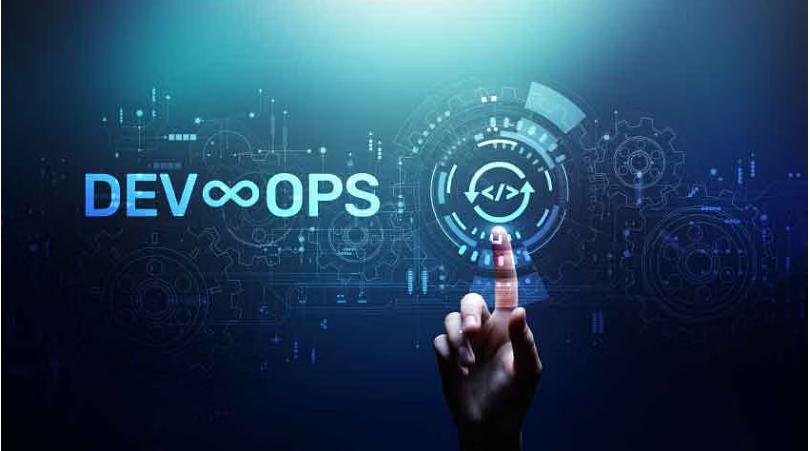Mobile App
IT Sharks has many high quality courses available across 12 distinct categories. All our courses are self-paced and have been designed by subject matter experts, to give you an interactive and enriched learning experience.Depending on your learning goal, which help you focus your learning to provide you with specific expertise in your field or industry.
Free
Software Development
DevOps Diploma
Module 1: Foundations & Essentials
1.Linux Essentials & System Administration
- Introduction to Linux &Installation
- Command Line Basics
- File System Navigation & Permissions
- Managing Packages & Repositories
- Users, Groups & Permissions
- Bash Scripting Basics (Including CronJobs)
- System Services, Logs & Monitoring Basics
- Troubleshooting & Process Management
- Backup, Compression & Recovery
- Secure Shell (SSH) & Secure Copy (SCP)
2. DevOps Culture & Practices
- What is DevOps? Principles & SDLC
- DevOps Tools Overview
- Agile & Continuous Delivery
- Collaboration & Communication
3. Git & Version Control
- Introduction to Git & GitHub
- Git Commands
- Branching, Merging & Rebasing
- Collaboration Workflow (Gitflow)
4. Web Servers Overview
- What is a Web Server?
- Introduction to NGINX
- Setup & Differences
5. Python for DevOps
- Python Basics: Variables, Control Flow, Functions
- Scripting for Automation
- Basic File & Network Handling
6. Databases for DevOps
- Intro to Databases (SQL vs NoSQL)
- Using MySQL: Queries and CLI
7. Networking Fundamentals
- OSI Model, TCP/IP Basics
- Ports, Protocols & DNS
- Subnetting Overview
- HTTP Methods
- Troubleshooting with CLI Tools
8. Docker & Containers
- Introduction to Micro-services
- Virtualization vs Containers
- Installing Docker & Running Containers
- Images, Docker files, and Volumes
- Docker Compose for Multi-Container Apps
- Docker CLI
- Docker Network
- Docker Compose
9. Kubernetes
- Intro to Kubernetes & Architecture
- Pods, Deployments, ReplicaSets
- StatefulSetsandDaemonSets
- Services & Networking
- ConfigMaps & Secrets
- Volumes in K8s
- Helm: Charts, Repos,Installation
- tOps
- Introduction to GitOps
- GitOpsPrinciples(Declarative,Versioned,Automated)
- GitOps Tools (ArgoCD, Flux)
- Deploying Applications with ArgoCD
- GitOps vs Traditional CI/CD
10. Cloud Fundamentals
- What is Cloud Computing?
- Public vs Private vs Multi-Cloud
- Comparing AWS, GCP, Azure (Overview Only)
11. AWS Essentials
- Creating an AWS Account
- IAM: Users, Roles, and Policies
- EC2: Launch, Connect, and Secure
- S3: Buckets & Access Control
- Load Balancing Basics
- Introduction to CloudWatch (Metrics + Logs)
- Intro to AWS CLI
12. Jenkins & CI/CD
- What is CI/CD?
- Jenkins Installation & Jobs
- Pipelines with Jenkinsfiles
- Build Triggers, Webhooks, Notifications
- Managing Credentials
- Jenkins Best Practices
13. Modern CI/CD Tools
- GitLab CI/CD Overview
14. Terraform Essentials
- What is IaC?
- Terraform
- Providers, Resources & Variables
- Terraform State Basics
- Simple Module Usage
15. Ansible Automation
- What is Ansible?
- Playbooks & Inventory
- Basic Commands & Modules
- SSH Setup & Configuration
- Install Packages, Manage Files Remotely
16. Monitoring
- Introduction to Prometheus
- Architecture & Data Model
- Installing Prometheus (Kubernetes-based setup)
- Scraping Targets (Node Exporter, App Metrics)
- Introduction to Grafana
- Connecting to Prometheus
- Building Dashboards
- Alerts & Notifications
17. GitOps
- Introduction to GitOps
- GitOps Principles.
- GitOps Tools (ArgoCD , Flux).
- GitOps vs Traditional CI / CS.
- GitOps Best Practices.
Short Description
Duration: 150 Hours
Connect with us
Villa No. 48, 2nd Floor, Flat 6, 105th Street, El Horreya Sq., Beside El Raya Market, Maadi - Cairo, Egypt 11728
-
Mobile+20 1112 50 5953
-
Whatsapp+20 101 774 3315
-
Email info@itsharks.co


